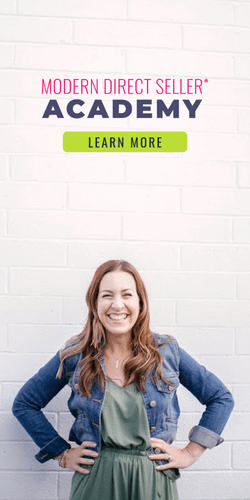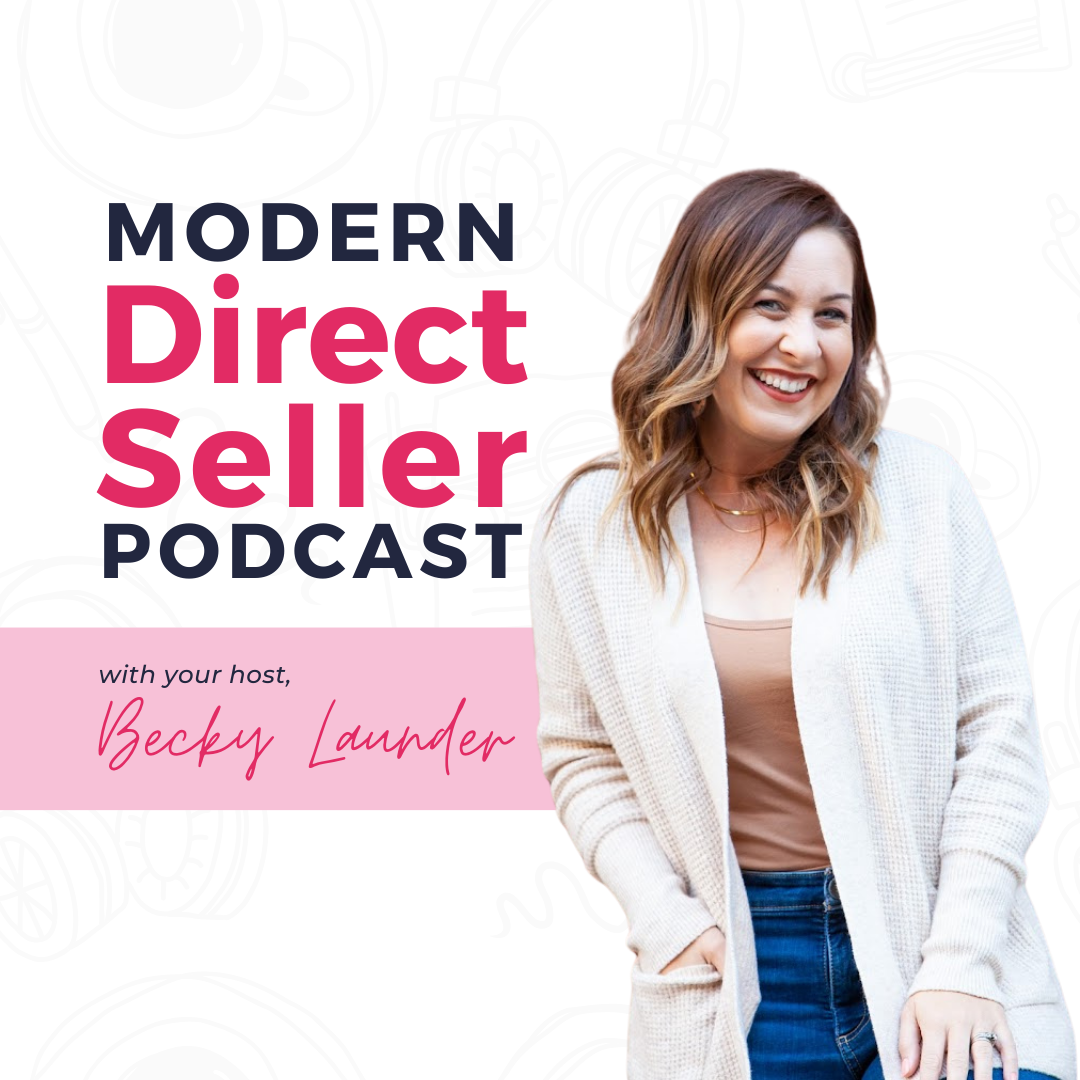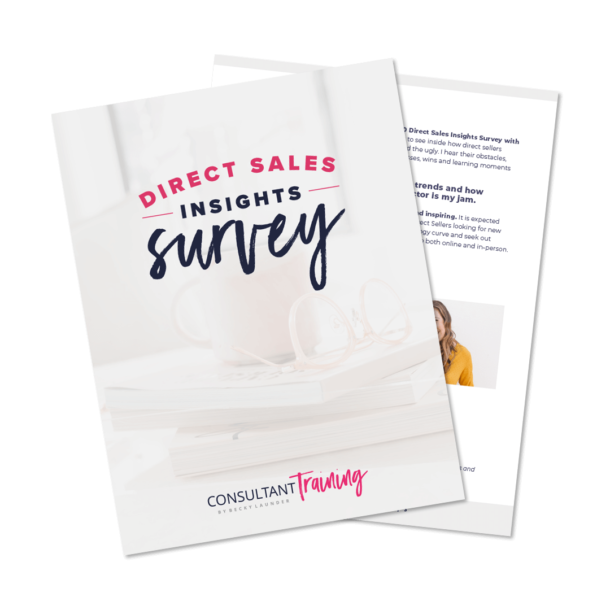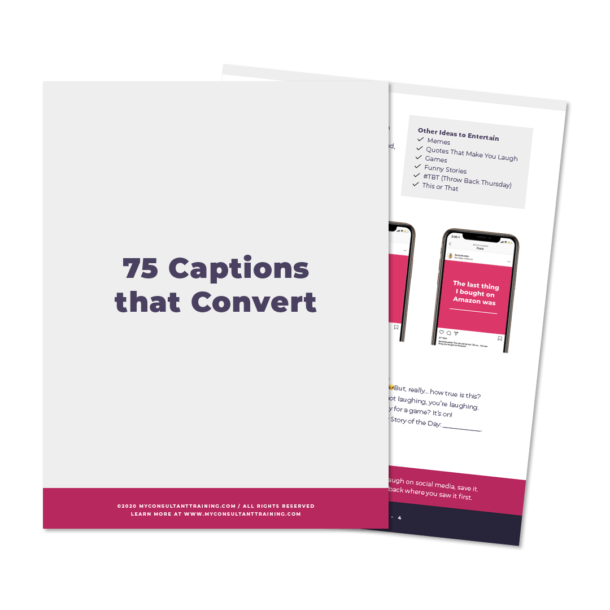Sage Polaris has spent 12 years helping her clients increase their sales through copywriting, and today she’s joining us on the Modern Direct Seller Podcast to share all of the knowledge she’s accumulated about content! From websites to social posts, newsletters to blogs, Sage is armed with tips, tricks, and audience insight to assist with any product or service you’re selling. Don’t miss this chance to choose the words that will start your year off strong!
Visit Sage on SagePolaris.com, apply to her no-charge copy course at SagePolaris.com/Guest, and grab her triple email open rates at SagePolaris.com/BeckyRocks.
Time based notes:
- 1:58 Sage Polaris introduction
- 5:13 Stepping into copywriting
- 10:37 Mixing personal and sales content
- 13:58 Using the color-coded copy system
- 22:05 Making copywriting mistakes
- 30:28 Sage’s favorite office supply
Communicating Through Copywriting with Sage Polaris
Sage Polaris has spent 12 years helping her clients increase their sales through copywriting, and recently, she joined us on the Modern Direct Seller Podcast to share all of the knowledge she’s accumulated about content! From websites to social posts, newsletters to blogs, Sage is armed with tips, tricks, and audience insight to assist with any product or service you’re selling.
Give us a quick intro, if you don’t mind. Tell us a little bit about yourself, your business, what you do, who you serve, and how you stepped into copywriting and launch strategy.
So, if you’re on the same marketing planet as me, then “copywriter” means helping you with the words on your website, or the words that you post on social media, to help you sell more of your service or product. So, nothing to do with legal, nothing to do with book publishing, everything to do with marketing.
Yeah. Good clarification.
So, I’m almost 12 years deep into this journey of having an online business. And initially, I started out as a private client copywriter, and I still do a little bit of that work. And, the reason I started there is, I loved, you know, getting to know people’s stories, and using their stories, and sharing their stories to help them reach more people and to attract more business to them. I had already been doing some online writing, travel blogging and things like that, and I had discovered that you can use the words to drive sales in your business, and it creates a deeper connection between you and your audience. And, I fell in love with that whole world of understanding branding and websites and all of those things.
And then, slowly, I got more into working on launch campaigns, where I was really focused on sales pages, and sales emails, and learning all of those direct selling skills. And, I really fell in love with that world. Because yes, there is the sales aspect of it. And, there’s definitely an adrenaline rush that comes with my clients doing upwards of 1.25 million in a single launch. But, also, there’s the deeper connection that they’re making with their audience. Like, that part really lights me up, to see community building. I love that aspect of online business in general, that I often say, like, “I’m not self-made; I’m community-made.”
I love that. And, I think in the direct sales space, back in the day, you could get away with more of a copy-paste kind of communication. But, I think we’ve seen our buyers become so much more sophisticated, which has required direct sellers to really up their game, and think about the role that content and copywriting plays in their day-to-day business. They need to have things in their own voice, and tell their story, and explain how that’s different than the brand story of the company that they’re representing.
So, more so here in 2024 than we’ve ever seen, copywriting is an essential skill for a direct seller. I’d love to hear from you how direct sellers can apply copywriting to what they’re doing, how to think about copywriting, and how to be good at it if this is something that they don’t feel super comfortable with. When are direct sellers able to tap into copywriting to better reach their audience?
So, first of all, I love what you said about how we’re shifting away from highlighting the company as the brand, and instead making a personal brand. And, that client that I mentioned did 1.25 million in a single launch, that was exactly the difference that they needed. They had, up until that point, always highlighted the corporate brand. And instead, I said, “You should tell more stories from the CEO and the founder, because that’s the person people are most interested in.”
And, in terms of using those stories to help you sell more of your service or product, the thing is, we like to believe that there has to be these really transformational, hero’s journey, epic stories. But, what’s really cool about the times we’re living in is that people are more so interested in those everyday stories that you share, where you’re going, what you’re doing. The way I think about it is “things you can see, taste, touch, hear.” I love that we are in a time where you don’t have to have this epic story to sell your products, but instead, people are interested in your every day of how you’re using and experiencing your products.
So, for example, with my email list, one of my highest open rates was with an email I wrote about how I was taking one week off in my business and what I was up to. And, I shared a little bit of context, so there were layers to the story that made people feel more deeply connected to me, but it was nothing big and special. It was just, “This is what I did for a week off.”
I love that you shared that. So often, it’s easier for us to create content that is a little bit more guarded, or a little bit behind the bigger brand, or that really sticks to the benefits and the product specifications and the details, and doesn’t really shed light on how you’re using that product on a day-to-day basis, or what your life looks like behind the scenes. But, genuinely, people are really curious about that. It is very interesting that we are in a time where that is just as valuable, if not more valuable, than actually talking about the product itself that you’re selling.
Now, there’s probably not a magic number or a certain percent of content that you should be sharing that’s more personal versus more sales, but what does that break down look like inside your own business?
So, I have shifted and evolved over time. I used to be 75% telling stories or sharing things about what’s going on with me, and then 25% selling. And, I’ve flipped it now. 75% of the time, I’m selling; 25% of time, I’m just sharing resources with people. And, the reason I made that shift is, I honestly used to be afraid to sell. That’s very normal to feel like, “I don’t want to push people into buying these things.” But then, over time, I got more comfortable with selling, and I had enough offers that I could be selling more often. And, for me, that’s a nice mix for my business.
Rather than take those numbers for themselves, I would rather someone reading this was intentional about whatever it is they do. So, let’s say you send four emails a month, or you do three social posts a week. With either option, just be very clear: How often are you going to share your lead magnet with your audience? How often are you going to be selling something to your audience? How often are you going to just be telling stories, and not having anything for sale, or just sharing resources that you enjoy for fun?
So, let’s say you’re sending those four emails, one per week. I do like when one social post or one email has one job, right? Like, don’t add multiple things all into one big newsletter. I actually think that’s rare that that works well for an audience. So, dedicate an email to your lead magnet once per month. Dedicate another email to sales. Depending on the sales strategy that you have, you probably will have more than just one email that week, but at least once a month where you’re selling would be ideal. Another week, tell a fun, relatable story. And, another week, share resources. That alone will get you 30 days of content. You can build as you go, but I want you to start with something that doesn’t feel overwhelming.
So, with that, in the masterclass that you led in our Modern Direct Seller Academy, you talked about your color-coded copy system. Are you able to give us a high-level recap of what the color-coded copy system looks like, and how it works, and how a direct seller might be able to apply that in their copywriting?
Thank you for bringing this up again! The color-coded copy system is a unique system that I came up with when I realized that there’s really four personality types, or four buyer types, who are looking at the words that you put on your email, on your social, on your website—anywhere really. And, when you realize who those four personality types are, you can appeal to them, and they’ll be more likely to take whatever action it is that you want them to take. I’ll also say that using this framework really helps if you’re the type of person who’s like, “Okay, I committed to writing this newsletter once a month,” or twice a month, or however often, “but I don’t know what I’m going to talk about. I don’t feel like I have any stories to tell right now.”
So, I used The Simpsons as the framework for the system, because there’s four characters on there that are really relatable and fun. For our first character, let’s go with Homer. If you think about the Homers of the world, they’re fun-loving decision makers. They love fun and funny things. So, just go back in your mind and just think about the funniest thing that’s happened to you. And then, write an email or a social post about that funny story. It might be a funny fail that happened. Like, you tried to make a new dish over Thanksgiving, and it totally flopped. Or, going into the new year, you had resolutions that you thought you were going to be able to accomplish, and they didn’t happen. Homers will say, “Oh, yeah, me too! I totally had a New Year fail.” That’s how they relate to you.
Next up, we have the Barts of the world. They are the fast decision makers. They’re the type that if you send them a subject line on your email or you start a post that says “World’s Shortest Post” or “World’s Shortest Email,” they will open it, because they like fun, funny, quick things. So, whatever the call to action is that you want them to take, don’t bury it at the bottom of your posts. Don’t bury it at the bottom of the email. Give them the action they can take right at the top. They love, like, “hit reply” emails. Like, “Hit reply and tell me this real quick.” Or, use those posts you see on social, where it’s like, “I’ve got a free resource for XYZ type of people. Comment below or drop me an emoji, and I’ll get it to you!” They respond best to those kinds of posts.
The third one is the Marges. They’re the deep connection decision makers. So, they are the ones who really love hearing your stories and feel connected to you through stories. They also love strong branded visuals. So, they feel connected to branded images of your product, or, you know, you as a person—if you are the personality of your business. And, they also really feel connected to when you share some deeper personal things. We all get to decide where we’re going to raise and lower the curtain, because I don’t feel like oversharing is good for every brand. But, Marges do you love your stories, if you’re willing to share them.
And then, so the fourth and final personality type are the Lisas of the world. They are the detail-oriented type of personality. So, I write emails that are, like, “I was on 47 podcasts in the last 12 months. Here’s what I learned from 47 podcasts.” Lisas love the data of my business. They’re like, “Yes, feed me all the numbers. I want to know all the details.” A lot of times, I’ll talk about how I did 52 projects for 19 clients, and I took 4 months off in a year, and they remember those numbers. They reflect it back to me. They are the ones who love longer emails or longer social posts.
So, the point of me telling you about these four personalities is to know that, whenever you go to make some content, you can appeal to one of them, and to encourage you to be keenly aware of who your audience is. What kind of content do they like? Poll them and ask, “What kind of content do you want from me? Do you want long form? Short form? Do you want video?” Video is for the Marges; they’re very visual people. For the Barts, it’s, “Do you want shorter stuff?” Or, for the Homers, “Do you want to hear more funny stories from me?” So, when you poll your audience in an Instagram Story or in a Facebook Group, and you find out what kind of content they want from you, then you’re really understanding them and you’re appealing to the types of people who you know want to hear from you.
I think that’s such a helpful perspective to have, whether you’re creating social content, or email content, or blogs, right? You’re going to have a mix of people that are reading it, and you’re going to appeal to different personas based on how you’re crafting those messages. And, I think, so often, we probably gravitate to what we like to do the most, right? And then, we look back, and we’re like, “Oh, gosh, I haven’t told a story in four months to appeal to this person or that person.” So, I think that that’s a really helpful framework.
Now, on the flip side, what kind of mistakes do you see people making when they’re thinking about their color-coded copy and trying to appeal to different buyer types? Where do people get mixed up or go wrong?
I mean, you nailed it already, which is to say that most people assume that others make buying decisions based on how you like to make buying decisions, right? So, don’t assume that people want to be appealed to in the same way that you do. Have a general awareness of markets, how saturated the markets are that you’re trying to appeal to, and shift your language around that.
Also, you need to really be clear on who your audience is when you’re selling. That’s a differentiator in and of itself, right? But, almost every time, when I look at someone’s sales page for a physical product or a digital product, at the top of the page, they might just say the name of the program.
So, let’s say we have somebody with skincare. They’re selling lotions and things like that. So, if you can, say, “This is for __,” and specifically mention the type of audience that you sell to. For example, “for women who are athletic.” And then, people in your audience will say, “Oh, I am an athletic woman! That’s me!”
Yeah, it’s not like “anyone with skin.”
Yes! I mean, I wish that would work. And, you can sell to anyone on the back end. But, the more specific your messaging is—”skincare for athletic women”—the more likely someone is to tell all their friends, “I found skincare just for us!” So, you will get remembered for those things, and they will be more likely to refer you to others, versus just saying “skincare for everyone.”
I love this example, because I think, especially in direct sales, most people feel as if they’re not salespeople. They feel like they’ve never had formal sales training, so the natural path is, “I want to sell this to anyone that wants to buy it,” right? So, the broad approach is much more commonly taken than finding a really narrow, specific audience. It’s one of those things that, I think, unless you’ve spent a lot of time in the marketing world, it is a little counterintuitive. But really, getting clear on who that audience is will help, as you’re writing copy, to really reach your people.
Get access to direct sales training, invites to exclusive virtual events, real time support and coaching, and more by joining the Academy at ModernDirectSellerAcademy.com!









0 Comments